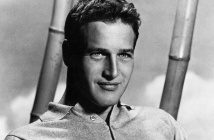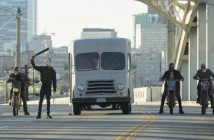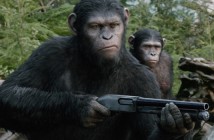10. The cube in Cube (1997)
Horror with a veneer of sci-fi, Vincenzo Natali’s Cube has an exemplary horror concept: seven individuals wake up in a bizarre structure built of a myriad of dimensionally-identical but differently-colored rooms filled with death traps and must investigate to escape and survive, a classic haunted house scenario. Its low budget and absence of back story make the film feel literally and figuratively hermetically-sealed, forcing the spectator to place him- or herself into the places of the characters and mentally explore the world that Natali and his collaborators have invented. A sequel and a prequel took the bait of explaining more fully the nature of the cube, but the original has just the right balance of sudden gore and eerie suggestiveness befitting its unique and challenging setting.
9. Art museums in Dressed to Kill (1980) and The Stendhal Syndrome (1996)
These two films have ambitious subjective sequences set in art museums: Brian De Palma stages in Dressed to Kill a virtuoso long take in New York City’s Metropolitan Museum of Art in which Angie Dickinson and a stranger, whose perspective we the viewers adopt, stalk each other playfully; Dario Argento’s film opens in Florence’s Uffizi Gallery with Asia Argento overwhelmed by the artwork in an example of the titular Stendhal syndrome named for the French writer who experienced these effects in the same location. Argento imbues his daughter’s character’s hallucinations with his trademark panache, while De Palma elicits the sexiness of meeting an attractive stranger in public and playing hide-and-seek amidst the hallways and galleries of a major museum. The structure of an art gallery becomes in both cases a frame and focus for the protagonists’ inner feelings to spill out into emotion and, ultimately, death.
8. Gothic castles in Roger Corman’s Edgar Allan Poe adaptations
With all due respect to Hammer Films, I somehow respond more strongly to the cycle of eight films directed by Roger Corman from the work of Edgar Allen Poe, under the aegis of American International Pictures during the 1960s, for their modern Gothic settings. Most of these movies star Vincent Price, himself a crucial part of the decor, but their longest-lasting aspect may well be the relatively lavish sets of mountain slopes and crumbling castles that Price and his cohorts can gleefully chew. Each film has its own flavor, certainly, with The Pit and Pendulum for instance featuring the horrifying titular chamber with the massive swinging blade, and The Masque of the Red Death is especially memorable for its variety of expressionistically-colored rooms. Although perhaps garish and tacky by today’s standards, the Corman-Poe sets become resolutely modern by combining the classic Universal monster locations with a knowing camp sense of humor.
 7. The open sea of Jaws (1975) and Open Water (2003)
7. The open sea of Jaws (1975) and Open Water (2003)
Jaws is of course the blockbuster that chides us for thinking it was safe to go back in the water, and Open Water is a true-life horror story of a couple on a leisurely scuba dive accidentally left adrift in shark-infested ocean. The iconic opening scene of the former and the whole of the latter play on the psychological fears of isolation and of the unknown that bobbing in the sea can evoke, as terrifying in its absence of boundaries as any more constricting setting like a tunnel or a single room. Even without knowing its outcome beforehand, the central premise of Open Water has a queasy inevitability to it, the open sea denying the natural comforts of ground beneath one’s feet. Jaws‘s opening scene, in its own visceral way, plays on the same fear of seclusion, adding in a terrifying darkness and the whiplash of sexual eagerness being transformed quickly and disturbingly into elemental dread.
6. The London Underground in Death Line (1972) and An American Werewolf in London (1981)
An English tube station is the setting for two genre-defying horror films of the 1970s and 1980s. Death Line, written and directed by the American Gary Sherman, concerns the cannibalistic inhabitant (Hugh Armstrong) of a collapsed London Underground station, the descendant of a team of railway workers who somehow survived the disaster earlier in the century. “The Man,” as he is billed, stalks the subway network gutturally uttering the standby phrase of subway workers, “Mind the doors!” Meanwhile, in John Landis’s comedic but ultimately tragic An American Werewolf in London, a suspenseful set-piece takes place in an Underground station. The audience gets both objective and subjective perspectives on an imminent werewolf attack, covering all sides of the wordless chase, culminating in a climax on an escalator that rewards the viewer with a brief glimpse of the creature itself from a vantage point at the top of the moving stairs.
 5. The twisted world of The Cabinet of Dr. Caligari (1920)
5. The twisted world of The Cabinet of Dr. Caligari (1920)
Probably the most influential and widely-seen German Expressionist film and horror movie of the silent era, Robert Wiene’s still disturbing Cabinet of Dr. Caligari takes place in one of the most distinctive settings ever put on screen, a stylized universe of obvious two-dimensionality and jagged landscapes. The tale of protagonist Francis’s (Friedrich Fehér) encounters with sideshowman Caligari (Werner Krauss) and his somnambulist (Conrad Veidt) ultimately operates on a different plane of reality than films before or since, on a subjective “mindscape” dissociated from normal life and perfectly expressed by the painted-on lights and shadows of the backgrounds. Caligari‘s look seeped into the genres of fantasy and horror, paving the way for the splintered interiorities of Lynch, Gilliam, and Burton, among others.
4. The British countryside in Witchfinder General (1968), The Blood on Satan’s Claw (1970), and The Wicker Man (1973)
In his 2010 TV documentary series A History of Horror, Mark Gatiss puts together three horror films from a span of five years but set centuries apart that nonetheless constitute a subgenre he dubs “folk horror”, distinguished by a peculiarly British take on paganism and local folklore. The first two chronologically, Witchfinder General and The Blood on Satan’s Claw, are the more unfairly neglected, but they both ruminate disturbingly on the powers of ritual and of demon-worship both imagined and real. Witchfinder makes up for in torture and misplaced authority what in lacks in true supernatural goings-on, while Satan’s Claw deftly balances political infighting and village gossip with wrenching scenes of rape and murder perpetrated by and on young people. The Wicker Man is the best known of the three and while contemporary in setting it dredges up the ritualistic religion of the past to shocking ends. The pastoral landscape has never been so uninviting as in these three films.
3. Hotels in The Shining (1980) and Hotel (2004)
Hotels are inherently transitory, being temporary homes that never feel quite as comforting as they should. The Overlook Hotel, for instance, in Stanley Kubrick’s adaptation of Stephen King’s chilling The Shining is one of the great settings in horror, grandly explored in striking tracking shots and seemingly endless long takes. From the frustrated wanderings of an unstable writer (Jack Nicholson) to the tricycling of his psychic son (Danny Lloyd), from the blood-filled elevator to the enigmatic Room 237, the Overlook is rife with suggestive menace and space for horrors both physical and psychological. A more recent but no less accomplished foray into a perhaps haunted hotel comes from Austrian filmmaker Jessica Hausner: Hotel is slow and methodical in weaving an unnerving atmosphere around a new receptionist (Franziska Weisz) investigating the nature of her workplace. While some may find it glacial and lacking payoff, I see an eerie mood piece always worth revisiting.
2. A shopping mall in Dawn of the Dead (1978)
Each of George Romero’s Dead films is set in its own uniquely powerful location, from the groundbreaking farmhouse besieged in the original Night of the Living Dead to the strikingly modern demarcated urban zones of Land of the Dead; but the second film in the series, Dawn of the Dead takes the bloody cake for political and cultural satiric import and imagination. Romero plants his TV station workers and SWAT team heroes into a shopping mall in Monroeville, Pennsylvania, the ultimate sanctuary that gives them the comforts of a lost suburban lifestyle until the undead again slowly attack. Much is made of the zombies’ instinctual consumerist mindsets within the confines of the mall, themselves having devolved into the ultimate insatiable consumers. Zack Snyder’s 2004 remake also does well with the setting, proving that the illusory all-in-one nature of the suburban shopping mall is still rife for satirical puncturing.
 1. Apartments in Repulsion (1965), Rosemary’s Baby (1968), and The Tenant (1976)
1. Apartments in Repulsion (1965), Rosemary’s Baby (1968), and The Tenant (1976)
The urban location of both home-like comfort and communal openness, the apartment became the central location for a very loose trilogy of horror-suspense films directed and co-written by Roman Polanski that investigate its protagonists’ fears of themselves and of others. Women’s fears take center stage in both Repulsion and Rosemary’s Baby, accounts respectively of a Belgian manicurist (Catherine Deneuve) in London slowly going insane alone in her sister’s apartment, and a newlywed soon-to-be-mother (Mia Farrow) in New York who thinks she’s being targeted by a satanic cult. Both films thrive on paranoia and conspiracy, whether real or imagined, relying on the constricting confines of apartment rooms and apartment buildings. In a way, this theme comes to a head in Polanski’s Paris-set, self-starring The Tenant, featuring a protagonist seemingly threatened on all sides by the physical and mental confines of his apartment complex and his fellow tenants.



